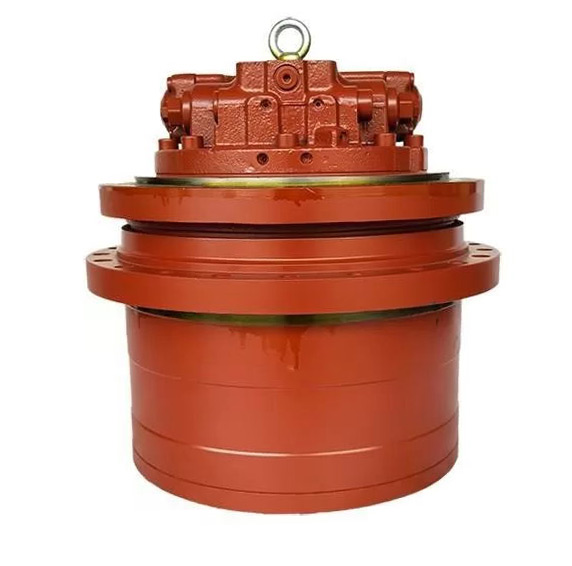
Hydraulic final drive motors are essential components in excavators and other heavy machinery, facilitating the powerful and precise movement required for efficient operation. This blog provides an in-depth exploration of the various types of hydraulic final drive motors, their unique features, and benefits. Additionally, it includes insights into the types of motors used in excavators and commonly used hydraulic motor part numbers. By understanding these aspects, you can make informed decisions regarding the selection, maintenance, and replacement of these critical components.
Excavators, integral to the construction and mining industries, rely heavily on their hydraulic systems to perform a wide range of tasks. The hydraulic final drive motor is a key component in these systems, responsible for converting hydraulic energy into mechanical motion to drive the vehicle’s tracks or wheels. This blog aims to provide a comprehensive understanding of the different types of hydraulic final drive motors, their applications, and the factors to consider when selecting the right motor for your excavator. Additionally, we will explore the types of motors commonly used in excavators and list some frequently used hydraulic motor part numbers.

Radial piston motors are known for their distinctive cylindrical shape and the arrangement of several pistons radially around a central shaft. The pistons are connected to a swash plate, which converts the rotary motion of the central shaft into linear motion, driving the vehicle’s tracks or wheels.
Features and Benefits:
Axial piston motors are similar to radial piston motors but have pistons arranged axially along the central shaft rather than radially around it. These motors are versatile and efficient, suitable for a variety of applications.
Features and Benefits:
Gerotor motors are characterized by a set of meshing gears that rotate around a central shaft. The gears are mounted on a rotor, which is surrounded by a stator. As the rotor rotates, it generates a flow of hydraulic fluid, driving the vehicle’s tracks or wheels.
Features and Benefits:
Vane motors are characterized by a set of vanes mounted on a rotor that rotates inside a cylindrical housing. The rotation generates a flow of hydraulic fluid, driving the vehicle’s tracks or wheels.
Features and Benefits:

Screw motors feature a helical screw that rotates inside a cylindrical housing. The rotation generates a flow of hydraulic fluid, driving the vehicle’s tracks or wheels.
Features and Benefits:
Excavators typically use hydraulic motors for their mobility and operational efficiency. The two primary types of motors used in excavators are hydraulic travel motors and swing motors.
Hydraulic travel motors are used to drive the tracks of the excavator, providing the necessary force to move the machine. These motors convert hydraulic energy into mechanical motion, enabling the excavator to traverse various terrains. They are designed to handle high loads and provide smooth, controlled movement.
Common Features:

Hydraulic swing motors are responsible for the rotational movement of the excavator’s upper structure, allowing it to swing left or right. These motors enable the operator to position the excavator accurately and perform various tasks efficiently.
Common Features:
When it comes to replacing or repairing hydraulic motors in excavators, knowing the commonly used part numbers can be incredibly helpful. Here are some of the frequently used hydraulic motor part numbers and their corresponding excavator models:
Choosing the right hydraulic final drive motor for your excavator is crucial for ensuring optimal performance, efficiency, and longevity. Understanding the different types of motors, their features, and benefits can help you make informed decisions tailored to your specific needs. Additionally, knowing the commonly used hydraulic motor part numbers for various excavator models can simplify the process of maintenance and replacement.
By considering factors such as load capacity, speed, environmental conditions, precision, and maintenance requirements, you can select a hydraulic final drive motor that meets the demands of your heavy machinery. Whether you are using radial piston motors, axial piston motors, gerotor motors, vane motors, or screw motors, each type offers unique advantages that can enhance the functionality and reliability of your equipment.
A: The primary function of a hydraulic final drive motor in an excavator is to convert hydraulic energy into mechanical motion, driving the vehicle’s tracks or wheels and enabling movement.
A: Yes, hydraulic final drive motors can often be rebuilt. The process involves disassembling the motor, inspecting and replacing worn or damaged parts, cleaning components, and reassembling the motor to restore its functionality.
A: Recommended maintenance practices include regular inspection of oil levels, checking for leaks, monitoring performance for signs of wear or failure, and following manufacturer guidelines for lubrication and servicing.
A: Vane motors operate by using a set of vanes mounted on a rotor that rotates inside a cylindrical housing. The rotation generates a flow of hydraulic fluid, driving the vehicle’s tracks or wheels.
A: Replacement parts for hydraulic final drive motors can be found through authorized dealers, online retailers specializing in heavy machinery parts, and directly from the manufacturer.
Understanding the intricacies of hydraulic final drive motors and their applications in excavators can significantly enhance your ability to maintain and operate heavy machinery effectively. By considering the detailed information provided in this blog, you can make informed decisions that ensure the optimal performance and longevity of your equipment.